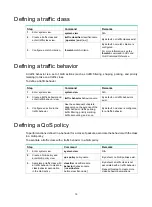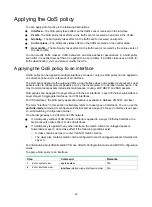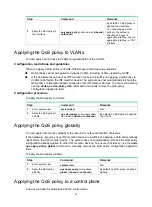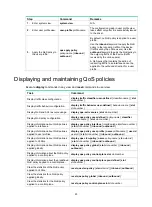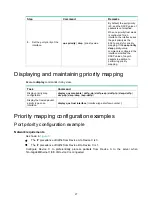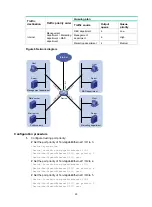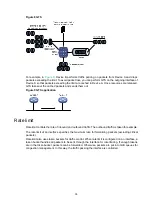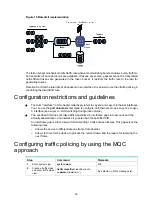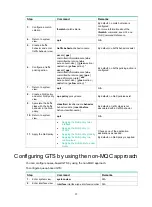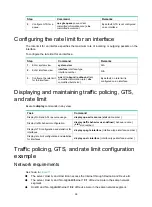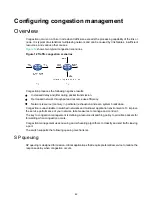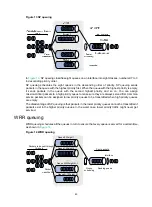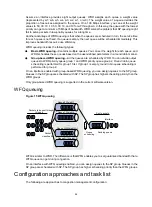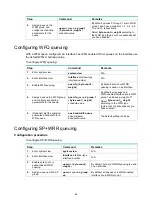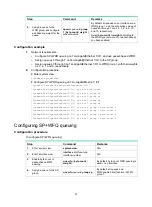
32
Configuring traffic policing, GTS, and rate
limit
Overview
Traffic policing helps assign network resources (including bandwidth) and increase network
performance. For example, you can configure a flow to use only the resources committed to it in a
certain time range. This avoids network congestion caused by burst traffic.
Traffic policing, Generic Traffic Shaping (GTS), and rate limit control the traffic rate and resource
usage according to traffic specifications. You can use token buckets for evaluating traffic
specifications.
Traffic evaluation and token buckets
Token bucket features
A token bucket is analogous to a container that holds a certain number of tokens. Each token
represents a certain forwarding capacity. The system puts tokens into the bucket at a constant rate.
When the token bucket is full, the extra tokens cause the token bucket to overflow.
Evaluating traffic with the token bucket
A token bucket mechanism evaluates traffic by looking at the number of tokens in the bucket. If the
number of tokens in the bucket is enough for forwarding the packets:
•
The traffic conforms to the specification (called conforming traffic).
•
The corresponding tokens are taken away from the bucket.
Otherwise, the traffic does not conform to the specification (called excess traffic).
A token bucket has the following configurable parameters:
•
Mean rate at which tokens are put into the bucket, which is the permitted average rate of traffic.
It is usually set to the committed information rate (CIR).
•
Burst size or the capacity of the token bucket. It is the maximum traffic size permitted in each
burst. It is usually set to the committed burst size (CBS). The set burst size must be greater than
the maximum packet size.
Each arriving packet is evaluated.
Complicated evaluation
You can set two token buckets, bucket C and bucket E, to evaluate traffic in a more complicated
environment and achieve more policing flexibility. For example, traffic policing uses the following
mechanisms:
•
Single rate two color
—Uses one token bucket and the following parameters:
{
CIR
—Rate at which tokens are put into bucket C. It sets the average packet transmission or
forwarding rate allowed by bucket C.
{
CBS
—Size of bucket C, which specifies the transient burst of traffic that bucket C can
forward.
When a packet arrives, the following rules apply:
{
If bucket C has enough tokens to forward the packet, the packet is colored green.
{
Otherwise, the packet is colored red.
•
Single rate three color
—Uses two token buckets and the following parameters:
Summary of Contents for FlexFabric 5940 Series
Page 23: ...17 Figure 3 QoS processing flow ...
Page 84: ...78 Figure 26 MPLS label structure ...
Page 91: ...85 Switch burst mode enable ...


